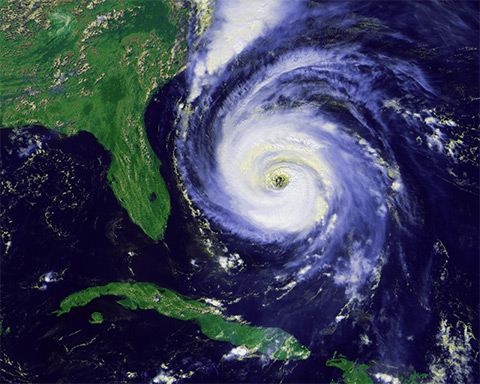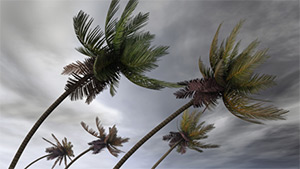
It’s August and we’re right in the middle of the Atlantic hurricane season, which officially began in June. The National Oceanic and Atmospheric Administration’s (NOAA) Atlantic Hurricane Season Outlook predicts a 65% chance of an above normal season. Of course, while the weather experts can forecast probable activity, they can’t predict the location of landfall until the storm track has been established, and even then, storms have been known to deviate from their projected path. So, for those aircraft owners who live on or near the Atlantic coast, the Gulf of Mexico, or the Caribbean Sea, having a hurricane plan for your aircraft is essential.
Undoubtedly, the best protection you can provide is to purchase hurricane insurance for your aircraft. Make sure your policy covers relocation expenses, should you need to fly your aircraft out of a storm’s path. The AOPA Insurance Agency provides coverage for individual owners as well as for flying clubs. Some policies cover the cost of hiring an evacuation pilot, relocating and storing an aircraft. Others will reimburse policyholders for relocating their aircraft outside of a hurricane watch or warning area.
Should you need to relocate your aircraft, here are some tips from the AOPA Insurance Agency to make the process go more smoothly:
- Choose evacuation airports that are comfortably within the range of your aircraft, are out of the hurricane watch or warning area, have scheduled airline service or rental car availability to get you and/or your evacuation pilot back home, and have temporary hangar or tie down space available.
- If you plan to have an evacuation pilot fly your aircraft, make sure you check your policy. It will state the required minimum qualifications for your pilot. For many common single-engine aircraft, it is simply "private pilot or better" and when looking for pilots in your area, check flight schools and aviation colleges, as well as local airports.
 Those aircraft owners who decide to stay and face the storm should have supplies on hand and a plan that can be implemented on short notice to help minimize possible damage to their aircraft.
Those aircraft owners who decide to stay and face the storm should have supplies on hand and a plan that can be implemented on short notice to help minimize possible damage to their aircraft.
According to Woody Cahall, AOPA vice president of aviation services, "You want to do everything you can to make sure your airplane is immobilized and that there's nothing loose that could blow into your airplane." Cahall says that most likely your airplane will fare better inside a hangar than out in the elements. But consider how solid the hangar is.
For those aircraft battened down outside:
- Clear the area. When picking a tie down spot, look for an area with the fewest number of objects that could blow into your aircraft. If your spot has a storage box, make sure it, too, is secure.
- Dig or deflate. Consider deflating the tires or digging holes for the wheels to keep the airplane in place.
- Control lock. Make sure the control surfaces won’t move in the wind. Install an internal gust lock. A lock that holds the controls in a neutral position is much better than looping a seat belt around the controls. (That usually sets the controls for a climbing turn, which is exactly what the aircraft will do if the tie downs come loose.) Even better, use external gust locks. Most aircraft don't have a rudder lock, but it may be a smart purchase, as a rudder lock costs a lot less than replacing a rudder. External gust locks on the elevator and ailerons can help prevent damage to control linkages and cables.
There are more tips online in AOPA’s subject report on Hurricanes. Questions? Give the aviation experts in AOPA’s Pilot Information a call, 800-USA-AOPA (872-2672) Monday through Friday 8:30 to 6 p.m. ET.



